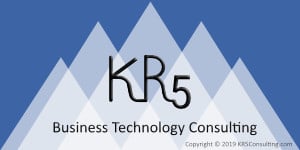Can leaders turn key man risk to an advantage? Are anxieties about losing a key person affecting your home life? Are tensions at work affecting how you manage? How could you turn that on its head?
If you’re concerned over staff retention, you’re not alone. Beneath the surface, leaders can feel anxious about retaining one or more key people. What’s the impact of losing a key person, and how is it possible to turn that into an advantage?
Overcoming key person risk is partly a system problem. Our Business System: An Essential Guide to Growth guide will help you design a robust system for better results.
What is a Key Person?
A Key Person is anyone needed for the continued success of the business. It could be any person that’s a vital part of the on-going business success. An owner is often a key person too.
What is Key Man Risk?

Key man risk or key person risk is simply the business risk of losing a key person. Owners are often so busy with the day to day, that they find it easy to overlook. Accidents happen, and people can become seriously ill. Illness could be mental as well as physical. A surprising number of people suffer from stress, anxiety, depression, and trauma. It’s not only the person themselves, it could also be illness or a frail family member that changes priorities. The reality is that leaders can’t control the trigger, they can only manage how the business responds.
What’s the Impact?

When a small business loses a key person, it can have a huge impact. The business can’t function as it did before. That person might be the driving force for the business. Loss might affect financials, investment, confidence, or image. When the owner is the managing director, then addressing key person risk may help secure the long-term future. Until a crisis, owners may not realise how dependent the business is on them. Owners may also realise there’s a problem during high-growth or when planning an exit.
The Challenge
Once you’ve found the key persons, you can assess the potential impacts and risks. Although the business risks are common, you can reduce them through better design. Let’s explore the challenges of six key areas for managing key man risk:
#1 Governance

The board of a small business is often involved in day to day work. They may struggle to separate working “on” rather than “in” the business, finding it hard to draw the line between “on” and “in” without clear responsibilities for oversight and approvals. As a result, leaders may not have a clear picture of the overall situation. Control and decision-making may become more difficult. Overlaps and inconsistencies can cause friction and create risk. Key people may need to be involved in more handholding, planning and decisions. Instead of organised control, key people plug the gaps.
#2 Organisation
Leaders are not only concerned about keeping control; design issues can create other failures. Causes range from inconsistencies to fiefdoms. Inconsistencies may result in things “falling between the gap”, or more likely the need for a key person to deal with an emergency which should never have happened in the first place. Of course, there can also be problems with internal politics caused by a power vacuum or silos competing against each other. Leaders will want to avoid inconsistencies, gaps, and internal friction because they can waste time, cash, and resources. Staff are less likely to stick around in a stressful or unproductive workplace. Perhaps worse, is the impact to customers through errors and delays.
#3 Processes

Processes are simply a sequence of steps that deliver a result. You might not call them processes, yet every business has them. They may evolve with know-how and workarounds over time. Undocumented processes are not uncommon and are the tribal knowledge for a select few. When a process is in someone’s head, it’s unlikely to meet the needs of the growing business. Those needs might be for better planning, improved quality and for accurate reporting. Key people must hold everything together if there’s no designed process. Staff may find this particularly stressful, increasing the risk of loss.
#4 Skills
Skills transfer is how staff gain know how. There’s a problem if skills and skill levels are not known for a task. The business can lose much of their knowledge overnight when a key person leaves. Senior leaders may not even be aware of all the different activities performed by a key person. Skills might involve techniques and methods of great value to the business. After a key person loss, senior leaders may struggle to pick up the pieces because there’s no record of the skills and knowledge to complete work: Other staff may find it difficult to “cover” the lost skills.
#5 Information
One of the risks is the information loss caused by a key person leaving. They may have exclusive information about the best way to work with a customer or supplier. A key person may know how to get the best from a product, and the most effective application. They might also know how to achieve success, for example in sales or marketing. Inflight work is often the most difficult to deal with, perhaps in the sales or delivery pipeline. Then there is the information for planning or decisions. The range of information is far reaching, and the thought of that disappearing is sobering. It’s essential to secure critical information: Useful information is also an asset.
#6 Systems

Key people may also plug gaps in the business systems. Business investment in systems can be hit or miss resulting in gaps here and there. As a result, staff must bridge the gap in systems for everything to work. In effect staff are part of the system instead of solely running the system. The stress on systems, people and their knowledge can increase during high growth. When a person goes, there’s a risk that systems won’t work. Ideally, you’ll want to create a prioritised roadmap to plug system gaps to minimise disruption.
Early Advantage of Tackling Key Man Risk
The nature of risk is that it may or may not happen. Creating systems and retaining information and knowledge reduces many of the risks linked to losing a key person. Losing a key person will still hurt, however it will be easier to recover with the right systems in place. That means that there is an advantage of tackling key person risk early, as the business will become more resilient and scaleable.

We’ve explored six areas from governance to systems to manage key person risk. You can plan to address issues to strengthen the business once you’ve identified the risks. Of course, taking early and incremental steps improves the business and reduces bigger problems further down the road.
Taking Action
For leaders that want to grow and scale, addressing key person risk is likely to be closely aligned with business goals. They might want to develop robust systems as part of building a growing business. Key person risk is a good starting point as it looks at building a foundation around key activities.
Some leaders, anxious about what might happen to their business, struggle to think through the problem; others feel overwhelmed by all the steps; and a few feel frustrated that they’re just not moving fast enough. Meet with me for a free 30-minute virtual call and let’s work together to explore the best way forward for you and your business.
If you’d like to explore the ideas in this article further or need help and advice, please contact Rogan at rhounsell@kr5consulting.com – to arrange an informal chat.
If you’ve found this blog interesting or useful, please ‘like’, ‘comment’ or ‘share’ so it can help others too.

